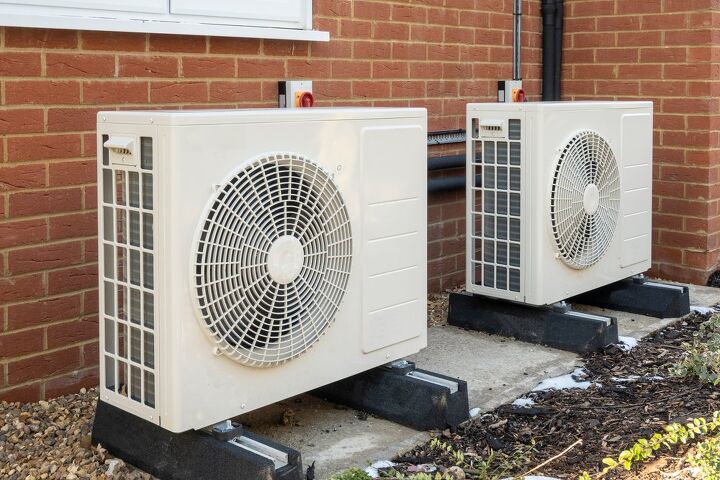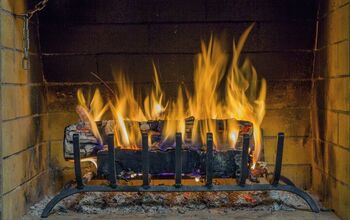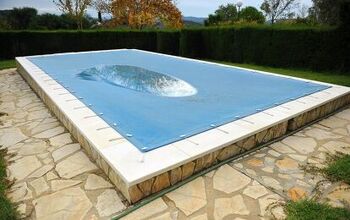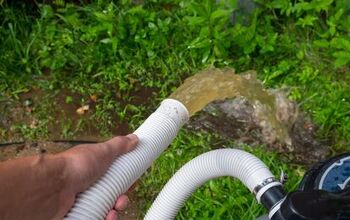What Size Heat Strips Do I Need? (Find Out Now!)

Most heat pump systems are outfitted with electric heat strips – at least one, anyways. When purchasing a new heat pump, furnace, or air handler, you may have to choose a heat strip size. Heat strips range in size from 3kW, all the way up to 25kW, depending on the product.
The heat strip size that you need will depend on the size of your home, your climate, your home’s insulation, the location and size of your windows, and the size of your heat pump system. Generally speaking, you’ll want to choose a heat strip size that can produce at least 70% of the heat that your heat pump already does.
With that said, let’s take a deeper look at what heat strips are, how heat pumps use heat strips, what causes them to come on, the sizes of heat strips available to you, and all the factors involved in choosing the appropriate size.
Do You Need a Heating and Cooling Contractor?
Get free, zero-commitment quotes from pro contractors near you.

What are Heat Strips?
During your electric heat pump’s preventative maintenance, you’ve likely overheard your technician say that he/she tested “heat strips.” So, what exactly are these heat strips? Also known as “auxiliary heat strips” and “electric heat strips,” heat strips are a secondary and supplementary heat source installed in the air handler of your heat pump in order to assist the pump’s heating output when temperatures outside get exceptionally low.
When compared to your heat pump’s normal function, electric heat strips are not nearly as efficient. In order to understand how heat pumps use heat strips, you first need to understand how heat pumps work.
How Heat Pumps Work
When your air conditioner is functioning in A/C mode, it takes heat from inside your home, where it’s not wanted, and moves it outside. By transferring heat – or, a heat transfer – the air conditioner cools down your home. Heat pumps, on the other hand, are essentially air conditioners that operate in reverse.
Put simply, heat pumps run in heat mode and function by harnessing the warm air outside your home and moving it inside to heat your interiors – again, via heat transfer. However, the colder it gets outside (particularly, temperatures below 40 degrees), the more difficult it is for your heat pump to operate like this, as there is less heat in cold air.
So, in addition to the primary heating method, most heat pump utilize electric heat strips as an auxiliary heating source if the unit cannot convert the air outside quickly or efficiently enough. Heat strips are an electric heating element, similar to the heating elements in an electric oven. They are wire elements inside your heat pump that are heated by electricity, thus heating the air that travels through them.
It’s important to note that only heat pumps have heat strips, as gas furnaces with air conditioning use a combustible fuel as their sole heat source and don’t require supplemental heat. Although heating air with heat strips requires much more energy, your heat pump depends on these strips to perform some tasks, like defrosting the unit.
Reasons Heat Strips Kick On
During your heat pump’s heating operation, the electric heat strips inside typically come on for three main reasons:
Run Time
This is generally the most common reason that heat strips come on. Most thermostats are programmed to automatically turn on the heat strips if the system runs longer than a specified time (like 15 minutes) without raising the thermostat’s temperature more than half a degree. When this happens, the thermostat will signal the air handler to kick on the electric heat strips.
You may see either the LCD display show “AUX” or “AUX HEAT” or a red light turn on to indicate that the heat strips have turned on, depending on the thermostat you have. Though, many heat pumps will show both. The “aux” simply refers to auxiliary, as the heat strips are designed to be a secondary form of heat.
Demand
The second most common reason that heat strips will kick on is when there is a “demand” for them. This simply means that the temperature has been set three degrees higher than the thermostat setting. Though, three degrees is not unconditional, as different thermostats can have different balance points that may or may not need to be altered.
Even if your thermostat lets you chance this range, it’s recommended that you don’t adjust it. Three degrees delivers an excellent balance between energy savings and comfort, especially considering heat strips are very pricey to run.
Defrosting
On occasion, your heat pump will need to be de-iced. After your heat pump has been running for a long time or if it is operating in humid conditions, it can start to collect frost. This frost will turn to ice eventually, which will greatly reduce the amount of warm air the heat pump can generate.
To prevent your condenser from becoming a solid block of ice, the defrost mode will thaw itself out. When the condenser outside reaches a specific temperature, the system will switch over to air conditioning mode. Switching from heating to cooling mode forces the hot refrigerant supplying the primary heat source to melt the ice.
Then, to prevent a sudden rush of cold air from the system, it will turn on the heat strips to balance out the temperature.
How to Prevent Heat Pump from Using Heat Strips Frequently
Since operating heat strips requires significantly more energy than a heat pump’s primary heat source, they can also be pretty expensive to use. While it is often unavoidable for your heat pump to use heat strips on occasion, there are steps you can take to prevent your heat pump from using them often:
- Keep your thermostat at 68 degrees in the winter, as each degree above 68 can add as much as four percent to your utility bill. Maintaining a lower temperature will decrease the amount of heat your heat pump needs to generate, thereby limiting the need to rely on heat strips.
- Gradually increase thermostat temperature. If you lowered the temperature while you were away or asleep and want to increase it again, you should do so slowly – ideally, no more than two degrees at a time.
- Avoid using the emergency heat setting. This setting should only be used in emergencies and as a short-term solution – particularly if there is something wrong with your heat pump. It bypasses the main heating method and relies completely on the heat produced by the heats trips. Having your heat pump repaired or replaced ASAP instead of relying on emergency heat will save you time, energy, and money in the long run.
What Heat Strip Sizes are Available?
To help simplify the process of choosing the right heat strips for your heat pump, the following table outlines the most common sizes in kilowatts along with their equivalent in BTUs.
| Heat Strip Size | BTUs | Cost Range | Average Installed Cost |
| 3 kW | 10,000 to 15,000 | $45 to $60 | $140 |
| 5 kW | 15,000 to 20,000 | $45 to $65 | $170 |
| 7.5 kW | 20,000 to 30,000 | $75 to $95 | $180 |
| 10 kW | 30,000 to 40,000 | $80 to $140 | $210 |
| 15 kW | 50,000 to 55,000 | $125 to $225 | $270 |
| 20 kW | 65,000 to 70,000 | $165 to $270 | $325 |
| 25 kW | 85,000 to 90,000 | $210 to $300 | $350 |
Do You Need a Heating and Cooling Contractor?
Get free, zero-commitment quotes from pro contractors near you.

What Size Heat Strips Do I Need?
When buying a new heat pump, you will likely need to choose a heat strip size. For residential air handlers, heat strips range in size from 3kW to 25kW. The most widely used sizes are 5, 7.5, 10, 15, 20, and 25 kilowatts. Choosing the right size is crucial, as it could mean the difference between enjoying warm, cozy evenings in your home and being uncomfortably cold, wrapping yourself in layers and blankets.
The main factor involved in choosing the right size heat strips is the size of your home, as it determines the volume of space that must be heated. Though, there are a number of additional factors to consider in order to choose the appropriate size heat strips for your heat pump, including:
- The climate where you live. If your home is located in the Northeast or Midwest of the U.S., or anywhere else that experiences temperatures that regularly drop below freezing in the winter, you likely need a larger heat strip size than someone who lives in the Southeast. Even if you have the same size house, you want heat strips that can accommodate the supplementary heat needed to warm your home.
- Your home’s insulation. If your house is well-insulated, you might be able to use smaller-sized heat strips. Though, on the other hand, if your home has poor insulation, you’ll probably need to use heat strips that are a larger size – even if the climate in your area is relatively warm.
- The location and size of your windows. The windows in your home can either increase or decrease your home’s heat load, depending on their location and size. Additionally, windows that are uninsulated will transfer more cold air inside. Likewise, windows that are strategically placed can allow more light in, thus reducing your home’s heating needs.
- The size of your heat pump system. Overall, the bigger the system, the bigger the heat strip needed.
With these factors in mind, we recommend choosing a heat strip size that can deliver at least 70% of the heat that your heat pump does. When in doubt, speak with an HVAC professional as they will be able to properly size your heat pump equipment, including the condensing unit, air handler blower, indoor coil, and heat strips.

Jessica considers herself a home improvement and design enthusiast. She grew up surrounded by constant home improvement projects and owes most of what she knows to helping her dad renovate her childhood home. Being a Los Angeles resident, Jessica spends a lot of her time looking for her next DIY project and sharing her love for home design.
More by Jessica Stone





















![How To Reset A Whirlpool Cabrio Washer [In 5 Easy Steps!]](https://cdn-fastly.upgradedhome.com/media/2023/07/31/9076531/how-to-reset-a-whirlpool-cabrio-washer-in-5-easy-steps.jpg?size=350x220)
![12 Washing Machine Brands to Avoid [with Recall Data]](https://cdn-fastly.upgradedhome.com/media/2023/07/31/9075781/12-washing-machine-brands-to-avoid-with-recall-data.jpg?size=350x220)




